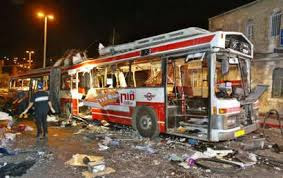The Goodreads Book Giveaway of The Cycle of Life finished on December 20. 755 people entered, and the winner has received her copy of the book - thank you for entering the Giveaway!
And thank you all who have read the book, bought it and given it as a gift, the very many who have commented so positively on the book, and all of you who keep buying and reading it - that is all a true gift to me.
Chapter 1, The Journey, opens with Cavafy's exceptional poem Ithaka:
As you set out for Ithaka
hope the voyage is a long one,
full of adventure, full of discovery.
Laistrygonians and Cyclops,
angry Poseidon—don’t be afraid of them:
you’ll never find things like that on your way
as long as you keep your thoughts raised high,
as long as a rare excitement
stirs your spirit and your body.
Laistrygonians and Cyclops,
wild Poseidon—you won’t encounter them
unless you bring them along inside your soul,
unless your soul sets them up in front of you.
Hope the voyage is a long one.
May there be many a summer morning when,
with what pleasure, what joy,
you come into harbors seen for the first time;
may you stop at Phoenician trading stations
to buy fine things,
mother of pearl and coral, amber and ebony,
sensual perfume of every kind—
as many sensual perfumes as you can;
and may you visit many Egyptian cities
to gather stores of knowledge from their scholars.
Keep Ithaka always in your mind.
Arriving there is what you are destined for.
But do not hurry the journey at all.
Better if it lasts for years,
so you are old by the time you reach the island,
wealthy with all you have gained on the way,
not expecting Ithaka to make you rich.
Ithaka gave you the marvelous journey.
Without her you would not have set out.
She has nothing left to give you now.
And if you find her poor, Ithaka won’t have fooled you.
Wise as you will have become, so full of experience,
you will have understood by then what these Ithakas mean.
 |
| Constantine Petrou Cavafy |
Steve Zemmelman writes in Containing the light, in Spring Journal, 2015:
In The Cycle of Life: Themes and Tales of the Journey, Shalit places Jung’s conceptualization of the transformations of consciousness over the life span alongside life cycle theories, notably those of Eric Erikson and Daniel Levinson. He also places his ideas about the arc of life in relation to Greek myth (the three Morai who spin one’s fate – but not one’s destiny - at birth) as well as biblical, Talmudic and Hasidic tradition, the Hindu Ashramas or four stages of life, pre-Socratic Greek philosophy, Dante’s Divine Comedy and fairy tales.
Shalit’s amplifications of Jung’s work on understanding the life cycle are substantial. He outlines the developmental progression through the child, the puer/puella, the adult, and the senex. His talent for integration and creative thinking is evident in bringing to bear on Jung’s thinking various psychoanalytic theorists - notably Freud, Klein, and Winnicott – as well as myth, fairy tale, comparative religion, etymology and dream material.
Where this book shines is not in a dry recitation of the psychology of transition through life’s stages but in the sense of wonder and mystery Shalit is able to articulate in relation to the problems of life all along the journey.
Erel Shalit’s books reflect his skill and experience as a clinician and thinker in the Jungian tradition who is making a major contribution to the body of psychological thinking in general and Jungian theory in particular.
In The Cycle of Life: Themes and Tales of the Journey, Shalit places Jung’s conceptualization of the transformations of consciousness over the life span alongside life cycle theories, notably those of Eric Erikson and Daniel Levinson. He also places his ideas about the arc of life in relation to Greek myth (the three Morai who spin one’s fate – but not one’s destiny - at birth) as well as biblical, Talmudic and Hasidic tradition, the Hindu Ashramas or four stages of life, pre-Socratic Greek philosophy, Dante’s Divine Comedy and fairy tales.
Shalit’s amplifications of Jung’s work on understanding the life cycle are substantial. He outlines the developmental progression through the child, the puer/puella, the adult, and the senex. His talent for integration and creative thinking is evident in bringing to bear on Jung’s thinking various psychoanalytic theorists - notably Freud, Klein, and Winnicott – as well as myth, fairy tale, comparative religion, etymology and dream material.
Where this book shines is not in a dry recitation of the psychology of transition through life’s stages but in the sense of wonder and mystery Shalit is able to articulate in relation to the problems of life all along the journey.
Erel Shalit’s books reflect his skill and experience as a clinician and thinker in the Jungian tradition who is making a major contribution to the body of psychological thinking in general and Jungian theory in particular.




































